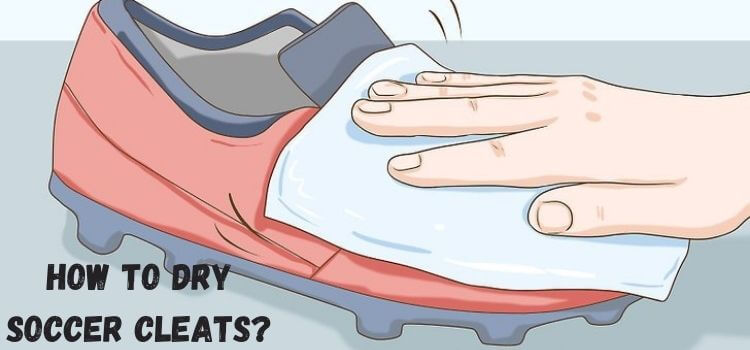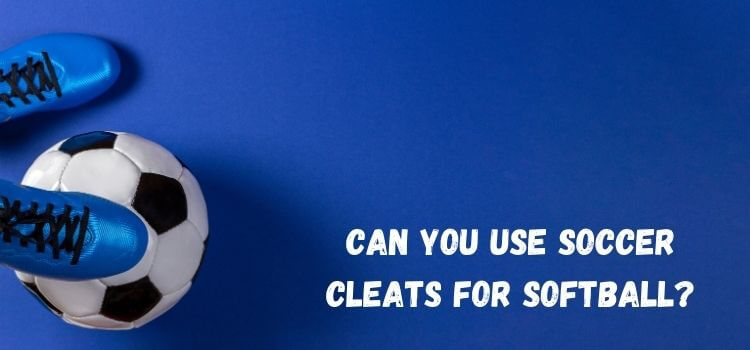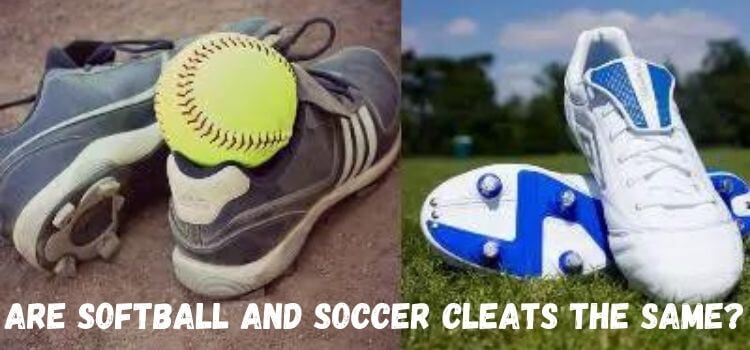As an Amazon Associate, I earn from qualifying purchases
Welcome to our comprehensive guide on “How to Dry Soccer Cleats,” we’ll walk you through practical methods to ensure your soccer shoes remain in top condition after a game in wet conditions.
Properly drying your soccer cleats is crucial for maintaining their performance and longevity. Knowing the proper techniques can significantly prevent unpleasant odours and potential damage, whether you’ve played in the rain or dealt with accidental spills.
Let’s explore step-by-step instructions and tips to keep your soccer cleats dry, comfortable, and ready for your next match.

Introduction:
Soccer cleats are more than just a piece of gear; they’re an athlete’s weapon on the field, providing traction, stability, and control.
However, after a gruelling match or training session, they often become soaked with sweat or rain, requiring proper care to maintain their performance and durability. This guide will delve into the best practices for drying soccer cleats effectively.
Understanding the Materials:
Soccer cleats come in various materials, each with its properties regarding moisture absorption and drying. Leather, synthetic leather, and mesh are commonly used in cleat construction.
Leather, while durable, can stiffen and crack if not dried properly. Synthetic materials may not absorb as much moisture but can retain water, affecting comfort and performance. Mesh cleats dry faster but may require extra care to prevent damage.
Methods for Drying Soccer Cleats:
Air Drying:
The most straightforward method involves removing the cleats from the playing field and allowing them to dry naturally. Loosen the laces and remove any excess dirt or mud to facilitate airflow.
Keeping them out of direct sunlight and away from heat sources can cause them to warp or become damaged.
Stuffing with Newspaper:
Crumpled newspaper can help absorb moisture inside the cleats. Stuff the shoes with clean, dry newspaper and replace it every few hours until the cleats are dry. As a result, the shape of the cleats is preserved while they are drying.
Using a Boot Dryer:
Boot dryers are specially designed devices that circulate warm air inside the cleats, speeding up the drying process. Ensure the dryer is set to a gentle, low heat setting to prevent damage to the materials.
Avoid hair dryers or heaters, as the high heat can cause shrinkage or deformation.
Avoiding Direct Heat Sources:
Direct heat sources like radiators or hair dryers can cause damage to the materials, leading to cracking or warping. Letting the cleats dry at room temperature is best to avoid any potential issues.
Tips for Safe Drying:
Removing Insoles and Laces:
Take out the insoles and laces before drying to ensure thorough drying and prevent damage to these components.
Cleaning Before Drying:
Wipe off any dirt or mud from the cleats before drying to prevent it from hardening and causing damage during the drying process.
Avoiding Excessive Force:
Be gentle when handling wet cleats to avoid stretching or tearing the materials. If necessary, pat them dry with a soft towel, but avoid wringing or squeezing them excessively.
Preventing Odors and Mold:
Using Odor Absorbers:
Place odour-absorbing inserts or sachets inside the cleats during storage to prevent unpleasant odours from developing.
Applying Antifungal Sprays:
Regularly spray the inside of the cleats with an antifungal spray to prevent mould and mildew growth, especially if they have been exposed to moisture.
Storage and Maintenance:
Proper storage and maintenance practices can prolong the life of your soccer cleats and keep them in top condition:
Proper Storage Techniques:
Cleats should be kept as dry and relaxed as possible and away from direct sunlight.
Regular Cleaning Routines:
Allow your cleats to dry completely before storing them to ensure they are free of dirt and sweat buildup.
Conclusion:
Properly drying soccer cleats is essential for maintaining their performance and prolonging their lifespan. By understanding the materials used in cleat construction and following the recommended drying methods, athletes can ensure that their cleats remain in top condition and prepare for the next training session or match.
FAQs:
It’s not recommended to dry wet cleats in a dryer, since the heat can damage the materials. Air drying or using a boot dryer on a low heat setting is safer.
The drying time depends on various factors such as the materials used, humidity levels, and drying methods. On average, cleats may take 12 to 24 hours to dry completely.
To prevent damage to the materials, you should avoid using a hair dryer. Opt for air drying or using a boot dryer instead.
Try using odour-absorbing inserts or sachets, and regularly clean the cleats to remove sweat and dirt buildup. Applying antifungal sprays can also help prevent odour and mould.
It’s recommended to clean your cleats after each use to remove dirt and sweat buildup, especially if they’ve been exposed to moisture.
Read Our More Articles
- Are Metal Cleats Allowed in Soccer? The Ultimate Guide
- Are Professional Soccer Cleats Metal? A Comprehensive Guide
- Do Soccer Cleats Have Metal Spikes? Find Out Here!
As an Amazon Associate, I earn from qualifying purchases


